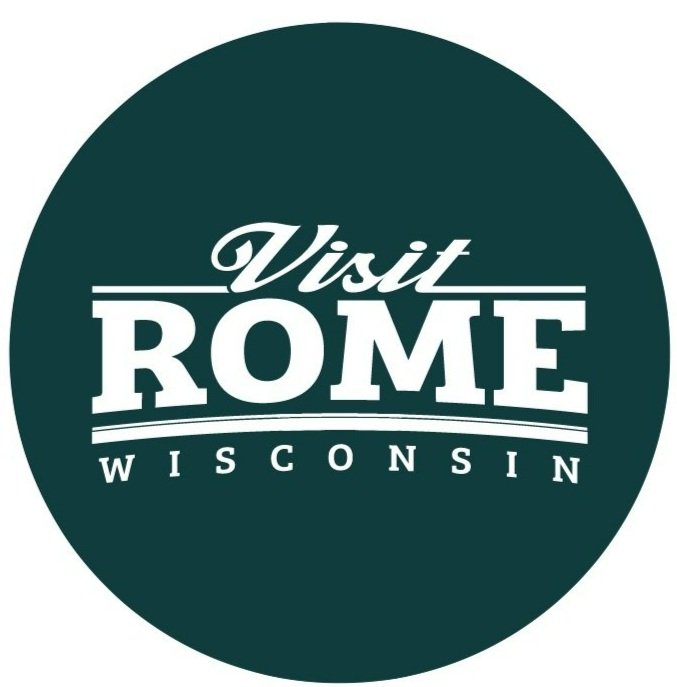The Early Years
If you read chapter one in this series, you learned how nature created the magnificent and unique terrain of Rome and surrounding areas. From the inland lake that redistributed sand and silt, to the coursing Wisconsin River that carved the beautiful Cambrian rock formations, to the wind-blown dunes of sedges, prairie grasses, and majestic pines.
You learned why Rome is called Rome, when the founders had every opportunity to call it whatever their wandering hearts could have imagined.
So now, let’s see what happened in this emerging town in the period after Rome became Rome - let’s call it from the tail end of the 19th century to the front end of the 20th.
Looking outward, the years that bookended 1900 saw many major accomplishments across the country - Thomas Edison patented the first viable light bulb (1879), USS Maine was sunk in Havana Harbor in Cuba, igniting the Spanish-American War (1898), and the Wright brothers took flight over North Carolina (1903),
Here at home in Rome, though, our entries into the history books were a little less consequential, but important, nonetheless. The Wisconsin Central Railroad began service between Portage and Stevens Point, and The Milwaukee Road Railroad reached Necedah, opening up trade and commerce lanes well beyond what the river provided (1877). Telephone service found its way into Adams County (1918). And State Trunk Highway 13 which cleaves its way north and south through the heart of Rome was officially designated (1920).
Indeed, the period showed many progressive changes. And it was reflected in the demographic make-up of Rome. Although New York-born residents still anchored the ethnic profile of the older generation, more and more citizens now claimed Wisconsin as their birthplace.
But they started coming from foreign lands too - like Canada, Germany, Norway, and Ireland. Yes, Rome’s foreign-born population continued to increase, in part due to targeted propaganda perpetuated by land speculators, and letters sent back to “the homeland" by immigrants encouraging friends and family to join them.
And join them they did. But even with the influx, Rome remained largely an agricultural and farming community. But the signs of change were becoming more and more evident. With population growth came a growing need for millers, carpenters, tailors, teachers, and especially loggers and lumbermen who fueled what would become the lifeblood of the region.
The lumber industry grew and thrived despite many obstacles. Long distances between supplies and markets, limited transportation options, and unpaved, indirect roads that made lumbering difficult at best, to name just a few. Notwithstanding, the lumber industry flourished in central Wisconsin on the shoulders of the Wisconsin River, which provided a fortuitous solution to most of these challenges.
In fact, at one point, lumber production was so abundant that a self-reliant community called Barnum was erected near the river in the vicinity of modern-day County Highway Z and Aspen Avenue. This popup village boasted some 20 homes housing roughly 60 sawmill employees and their families. During their most prosperous years, millions of board feet of lumber were launched down river from the Barnum sawmill, destined for points south.
Mill workers rented company homes and bought goods at the company store. They worked eleven-hour shifts, six days a week essentially reducing 6,000 acres of plentiful pines to remnant piles of sawdust. This was, by all accounts, a bustling business - until it wasn’t.
Barnum experienced a sudden demise, primarily due to two insurmountable disasters - a breach in a log holding pen on the river which liberated hundreds of logs unguided to who knows where, and a fire, believed to be arson, destroyed the mill itself, never to be rebuilt.
“Barnum winked out of existence almost as suddenly as it had been born.”
〜 Mark Scarborough, Historian
Interestingly, remnants of old Barnum stood until 1948 when all evidence of this rich chapter of local history was unceremoniously washed away when the newly constructed Petenwell dam flooded the Wisconsin River creating Wisconsin’s second largest lake, Petenwell Lake.
Like most of the country at the time, farming continued to be the mainstay of the economy. Here in Rome, however, the poor soil continued to make eking out a living more difficult than elsewhere. In fact, an acre of land in Rome in the early 1900s was valued at less than $5, whereas land in neighboring communities like Friendship, for example, was valued at $60.
“This was a poor area then. It was all sand…if people here could just scrape out a living, they were happy. They were pleased with just something to eat and enough money to pay their taxes.”
〜 Emil Kouba, Early Rome Resident
Still, dream-driven settlers, resolute in their determination to make a go of it, continued to migrate to the area. More and more newcomers were arriving from Eastern Europe, most notably from what was then referred to as Bohemia (later becoming Czechoslovakia and now known as the Czech Republic and Slovakia), many by way of Chicago. Collectively they established a close-knit community just south of present-day Sand Valley known as “Little Bohemia” that thrived there for many years.
Prosperity took hold, until, of course, the stock market crash of October 1929, which drastically curtailed the economic growth of the entire nation, and Rome was not immune. Several federal and local programs were enacted to ease economic burdens (e.g. The Civilian Conservation Corps (CCC), Agricultural Adjustment Act (AAA), and the Social Security Act), but it wasn’t until America’s entrance into World War II that the country, and Rome, saw any kind of resurgence.
It was slow, but the economy came back strong. The stage was now being set for the growth and development of Rome as we know it today.
Next up: Rome, Wisconsin - Then and Now. Chapter Three - Build It and They Will Come
Written by: Lydell Capritta (with thanks to Mark Scarborough and his all-encompassing book, There’s No Place Like Rome, Celebrating the Journey).
